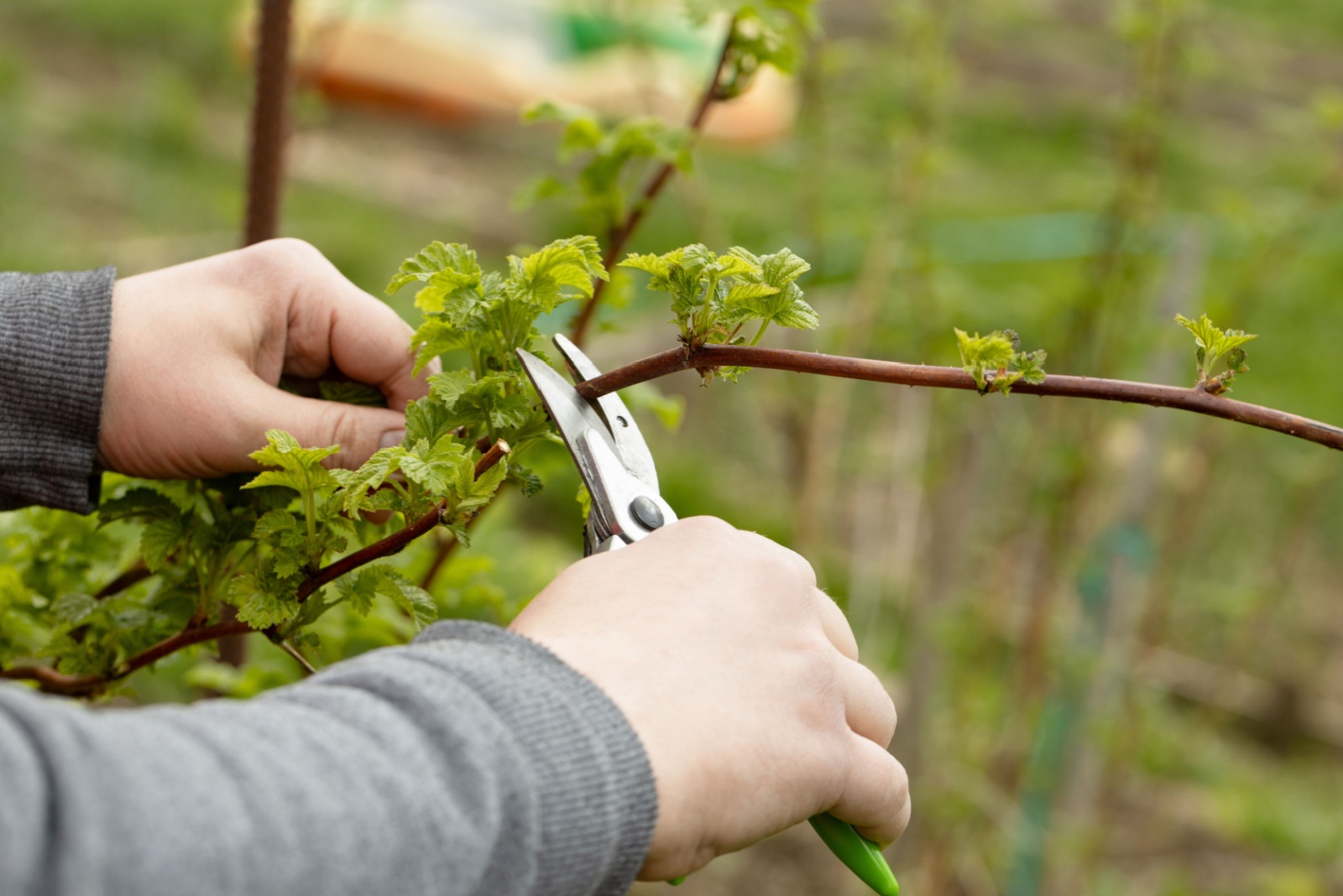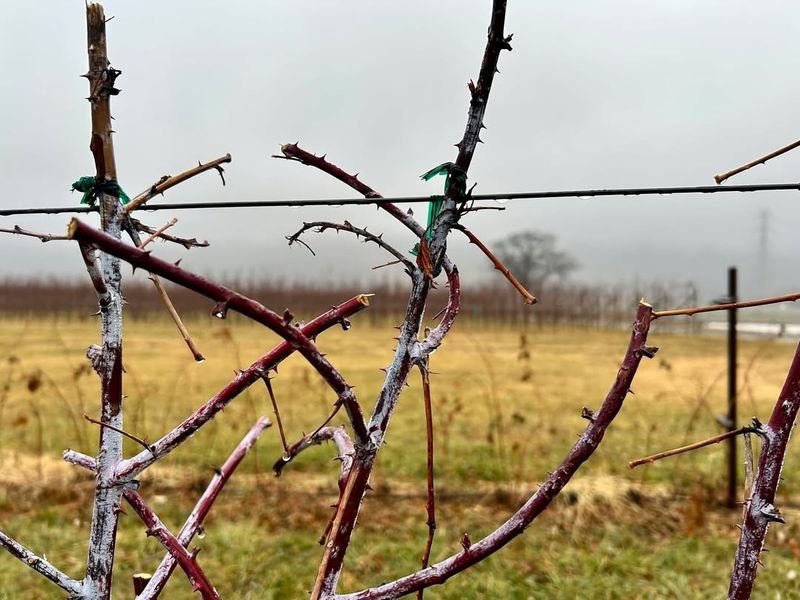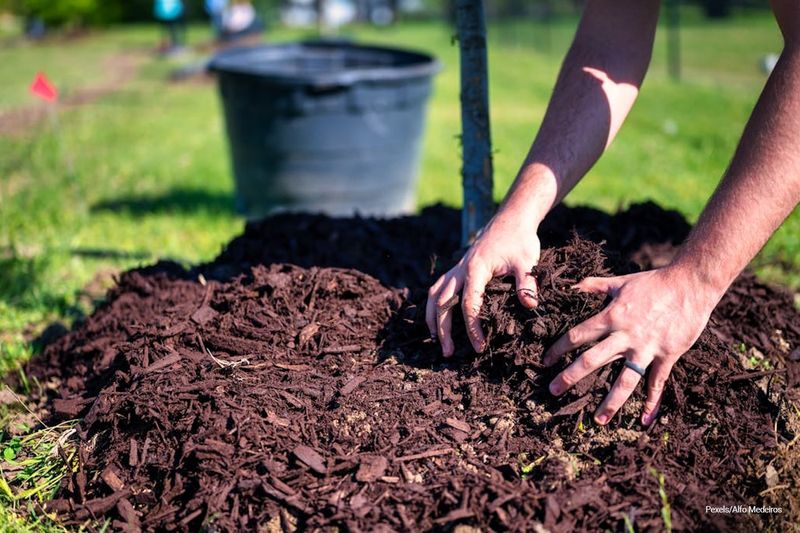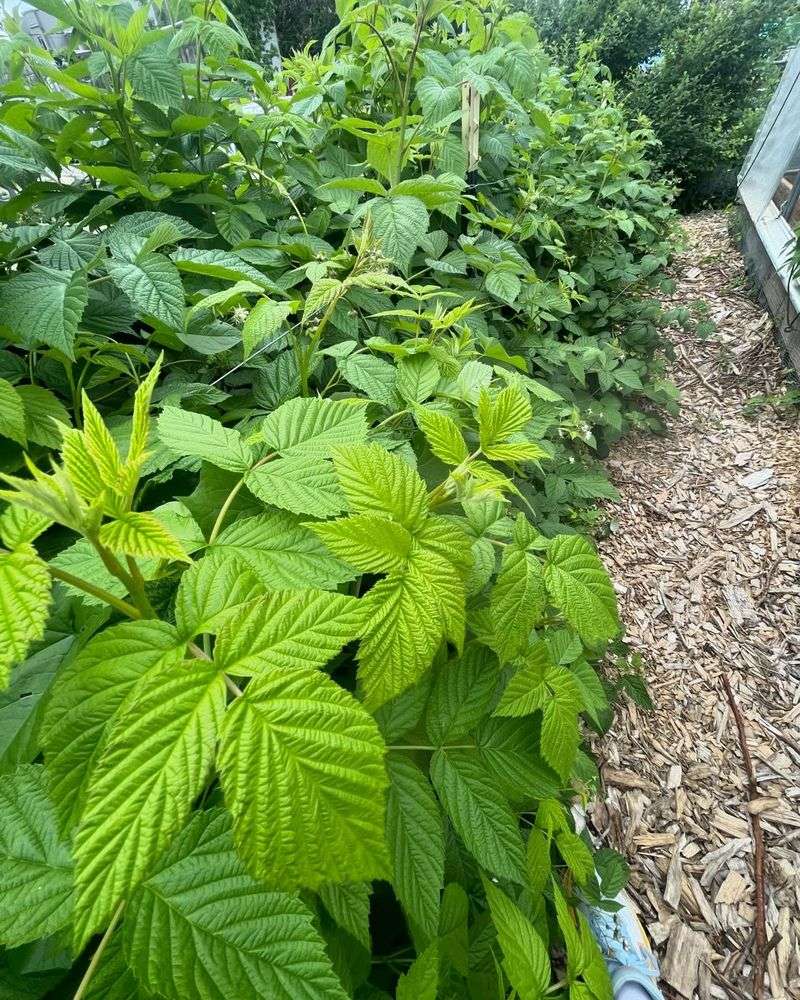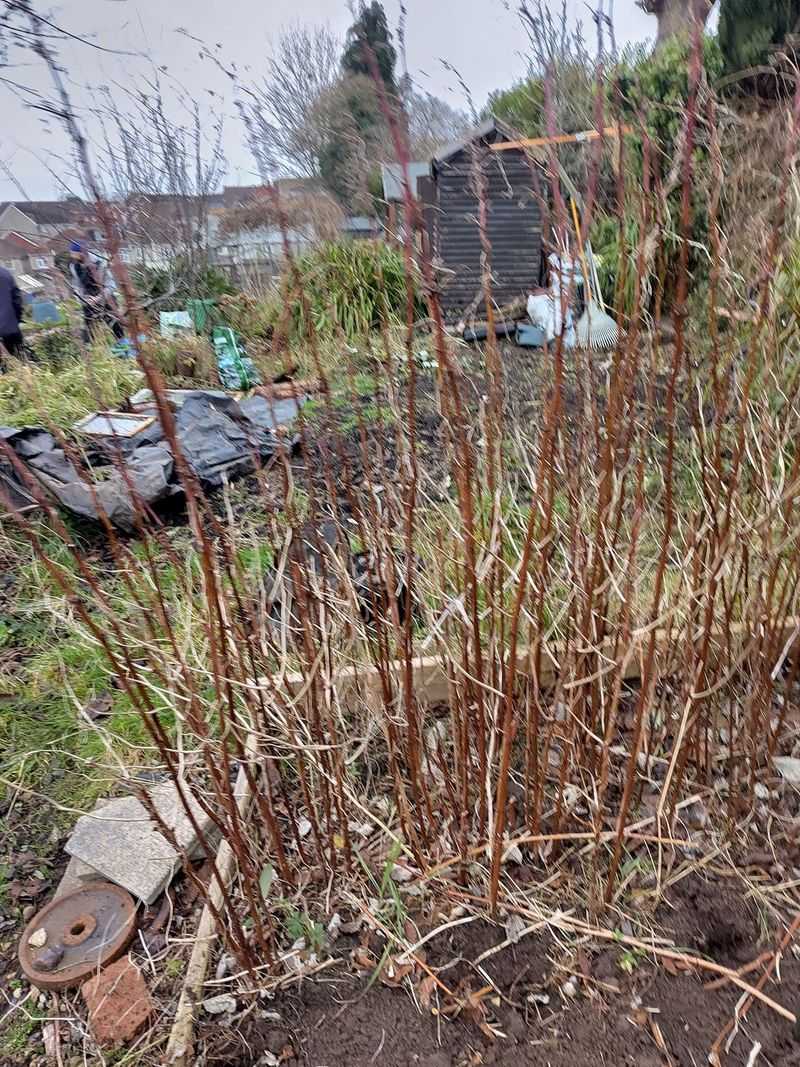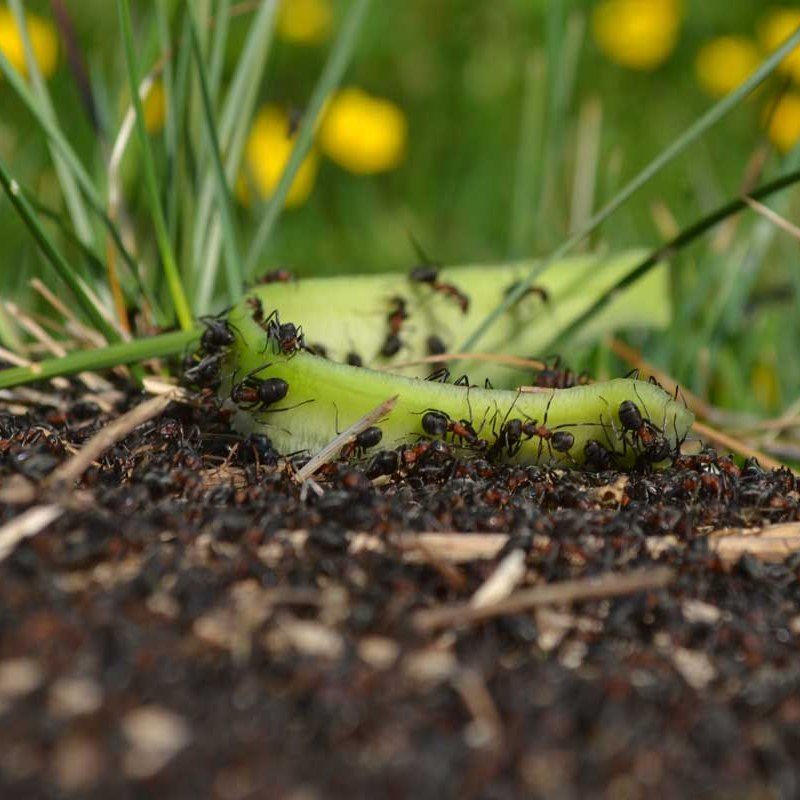Michigan winters can be brutal on raspberry plants if you don’t prepare them properly. When temperatures drop below freezing, unprotected canes can suffer serious damage or even die completely.
Learning how to winterize your raspberry patch before the first hard freeze arrives will help ensure a healthy, productive harvest next summer.
1. Prune Away Spent Canes After Harvest
Dead canes from this year’s harvest should be removed before winter sets in. Cut them down to ground level using clean, sharp pruning shears to prevent disease from spreading.
Summer-bearing varieties need their fruited canes removed, while fall-bearing types can be cut entirely to the ground. Removing old growth helps new canes thrive come spring and reduces places where pests might hide during cold months.
2. Add A Thick Layer Of Mulch Around the Base
Mulch acts like a warm blanket for raspberry roots during freezing temperatures. Spread four to six inches of organic material like straw, wood chips, or shredded leaves around the base of your plants.
Keep mulch a few inches away from the canes themselves to prevent rot. Proper mulching regulates soil temperature, retains moisture, and protects delicate root systems from Michigan’s harsh winter conditions.
3. Water Deeply Before The Ground Freezes Solid
Raspberry plants need one final deep watering before winter truly arrives. Well-hydrated roots can better withstand freezing temperatures and drying winter winds that pull moisture from the soil.
Water thoroughly until the soil is moist about six inches deep, then let it drain completely. Timing matters here—wait until late fall when plants are dormant but before the ground becomes too frozen to absorb water effectively.
4. Tie Canes Together For Extra Wind Protection
Michigan’s winter winds can snap or damage raspberry canes left unsupported. Bundle canes loosely together using soft garden twine or strips of cloth, creating a protective cluster that stands stronger against harsh weather.
Avoid tying too tightly, which can damage the bark and invite disease. Grouped canes also make it easier to cover them with burlap or other protective materials if an especially brutal cold snap is forecasted.
5. Apply Compost To Enrich Soil For Spring
Fall is the perfect time to feed your raspberry patch with nutrient-rich compost. Spread a two to three inch layer around the plants, which will slowly break down over winter and nourish the soil.
Compost adds essential nutrients, improves soil structure, and encourages beneficial microorganisms. By spring, your raspberries will have access to the fertility they need for vigorous growth and abundant fruiting when warm weather returns to Michigan.
6. Check For Pests And Diseases Before Winter
Inspect your raspberry canes carefully for signs of borers, beetles, or fungal infections before cold weather arrives. Remove any diseased or infested canes immediately and dispose of them away from your garden.
Pests and diseases can overwinter in plant debris, causing bigger problems next season. A thorough inspection now saves you headaches later and gives your plants the best chance at staying healthy throughout Michigan’s long winter months.
7. Consider Row Covers For Extreme Cold Snaps
When forecasts predict unusually harsh temperatures, row covers or burlap can provide extra insurance for your raspberry plants. Drape the material over your canes and secure it with stakes or weights.
Row covers trap heat and block damaging winds while still allowing some air circulation. Remove covers once temperatures moderate to prevent moisture buildup and mold growth. For Michigan gardeners, having covers ready means quick protection when polar vortexes strike unexpectedly.

